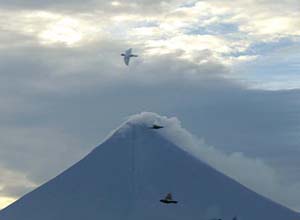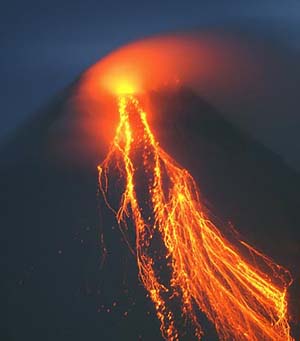| Home / International / International -- World | Tools: Save | Print | E-mail | Most Read |
| More Lava Flows Likely from Volcano |
| Adjust font size: |
Fresh deposits of searing gas, rocks and ash have been found on the Philippines' restive Mayon volcano, thought to be close to another major eruption, and scientists Tuesday warned that more destructive pyroclastic flows are likely. Brief breaks in the clouds covering Mayon indicated fresh deposits in some gullies to the east and northeast of the summit, the Philippine Institute of Volcanology and Seismology said. "More explosions from the crater are expected, and these shall likely generate pyroclastic flows," the institute said in a statement. Lava flowing down Mayon has already destroyed wide swaths of farmland and permanently altered the terrain near two villages, volcanologist Ed Laguerta said. Some 50 hectares of farmland and plantations have been destroyed by the lava that has trickled at least 6.7 kilometers since July 14, covering once-fertile agricultural land with molten rock and debris 10-15 metres deep, said Laguerta. By Tuesday morning, instruments recorded four overnight ash explosions, 24 volcanic earthquakes and 330 tremors from lava fragments tumbling from the crater and upper slopes. "The explosions, volcanic earthquakes, lava extrusion and high rates of degassing indicate a continuing high unrest at Mayon," a bulletin from the institute said. Scientists say the 2,462-meter volcano may be gearing up for an explosive eruption. Mayon started to spew ash and sulfuric dioxide last month and last week, the institute raised the alert to Level 4 the second highest of a five-step warning system on fears of a possible "hazardous" eruption within days. Laguerta said since the alert was raised on August 7, the volcano has had 35 ash explosions and has maintained an almost constant level of restiveness. But the expected explosive eruption has yet to take place. "Maybe this week we will reassess the situation if this will not blow up," he said, adding volcanologists may recommend shrinking the evacuation area.
(China Daily August 16, 2006)
|
| Tools: Save | Print | E-mail | Most Read |
 |
| Related Stories |
|

